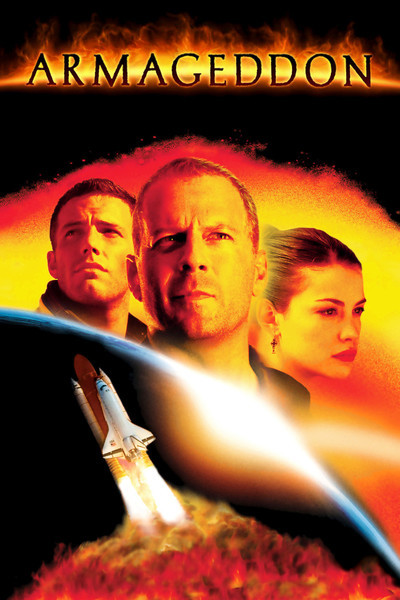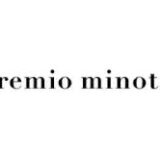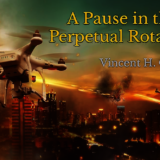by John M. Whalen

When I was a kid growing up in Philadelphia, my Uncle George, who liked to read and played stride piano by ear, came over to the house one day and gave my family a big cardboard box full of hardback books. One of the books was a novel by Edgar Rice Burroughs, Tarzan and the Golden Lion. I was already a Tarzan fan, having read the comic books and seen Tarzan at the movies and on the Late Late Show on TV. But I never knew anybody had written books about him. Being a naturally curious kid, and an avid reader, I dug into the novel and in ten minutes, I was hooked. And I was also shocked. Tarzan in the books was nothing like Tarzan in the movies!
This Tarzan was as savage as any of the ferocious animals he fought in the jungle, and lived well by plundering the gold vaults of the ancient lost city of Opar. He ate raw meat after a fresh kill! He had a son named Korak the Killer, for God’s sakes.
He was the lord and master of the primeval world he lived in by virtue of his strength, ferocity and courage. But he also spoke several languages, not Pidgin English, had an estate back in England, another estate in Africa.
I never got over the difference between the books and the movies and I’ve always yearned to see a film as good as one of the books. But it still hasn’t happened. Add to that disappointment, the Disney Studios release of John Carter, another film based on a character created by Edgar Rice Burroughs. Burroughs’ fans looked forward to it in eager anticipation, but it was a box office failure and got bad reviews from the mainstream press. The fans are about evenly divided—some loving it and others hating it. The bottom line seems to be that while the film comes close, like the Tarzan movies, it doesn’t really didn’t really capture the essence of Burroughs’ writing.
Hollywood has been trying for 96 years to get it right, as far as Edgar Rice Burroughs, is concerned—starting with the silent film version of Tarzan of the Apes (1916) starring Elmo Lincoln. Adaptations of some of Burroughs other novels haven’t fared very well either. Film versions of At the Earth’s Core, and The Land that Time Forgot tried to bring the stories to the screen as faithfully as they could, but were marred by low budgets and cheesy special effects. By far though, Hollywood’s biggest investment in Burroughs’ fiction has been the long list of films based on Tarzan of the Apes. And these movies are without a doubt Hollywood’s biggest failure in terms of translating Burroughs from print to silver screen.

From Weissmuller to James B. Pierce.
Probably the best known Tarzan flicks are the films made by MGM and RKO starring Johnny Weissmuller. These movies are entertaining, especially the early ones made at MGM (Tarzan Finds a Mate in particular), and some of the later RKO’s (Tarzan Triumphs), but they are light years away from the books. Other actors have portrayed Tarzan on film over the years, including Lex Barker, Jock Mahoney (who contracted Dengue Fever while filming on location in Thailand and lost 40 pounds), and Gordon Scott, (the first Tarzan in color, and a man who came to a very strange end, living his last days out in a wheelchair in the home of a fan who lived in Baltimore).
Ron Ely played Tarzan on TV in the sixties, and Bruce Bennett, aka Olympic shot putter Herman Brix, played the ape-man in Tarzan’s New Adventures, a 12-chapter serial written by Burroughs, and filmed in Guatemala. Brix didn’t catch any diseases, but Burroughs may have caught some kind of fever when he ran off during filming with the producer’s wife, but that’s another story. Jock Mahoney and Gordon Scott did some great stunt work in their films, though, and Scott’s Tarzan’s Greatest Adventure, which has Sean Connery (pre-James Bond) in the cast, is considered by some the best of the series. There were other attempts to get the ape-man up on the screen, including the stuffy Greystoke, a Bo Derek Tarzan vehicle, and the Casper Van Dien Tarzan film Tarzan and the Lost City.
In addition to Elmo Lincoln’s Tarzan of the Apes, there were several other Tarzan films made during the Silent Era, including Tarzan and the Golden Lion, which is of particular interest to me, since it was the first Tarzan book I’d ever read. The film was written by Burroughs and it starred James B. Pierce, who was Burroughs son-in-law. Probably the two most interesting things about this film are the set design, and the fact that Boris Karloff appears in black face as a villain. One of the sets is a recreation of Tarzan’s African estate. It is very accurate in reproducing the home as described in the books. It is big, lavish, including a grand piano, along with the Zebra skins on the floor. It’s an interesting treatment of Tarzan, but more of a curiosity than anything else.
The Era of Movie Remakes
Here we are now, living in the midst of the Era of Movie Remakes and Reboots, and I propose that Hollywood finally do justice to ERB’s character, and film a remake of this classic story. Given movie-making technology today, they could finally do it right. This, the ninth novel of the series, recounts Tarzan and Jane’s return to their jungle estate, after it had been burnt to the ground by World War I German soldiers. On their way home, Tarzan finds a lion cub whose mother was killed by a Gomangani (Ape-speak for an African). Tarzan brings the cub along and when they get home they find that the faithful Waziri warriors have rebuilt the estate. Tarzan names the cub Jad-Bal-Ja, which in the ancient language of Pal-Ul-Don (another strange place in Tarzan’s world) means Golden Lion.


The keyword in any Burroughs story line is “treachery.” And there’s plenty of that in this book. Most of it generated by a woman named Flora Hawkes, who once worked as a maid in Tarzan’s London and African estates, and a group of adventurers, including Esteban Miranda, a Tarzan look-alike, who plot to steal the gold of Opar. The action commences two years after finding the cub. By now Jad’s full-grown and follows the Lord of the Jungle around like a trained dog. Tarzan sets out for Opar himself, by sheer coincidence, to score some fresh gold, leaving the lion behind. The ape-man is captured by a wily high priest of Opar name Cadj, who wants to sacrifice Tarzan on the altar of the Flaming God. The ape-man is rescued by La, Opar’s high priestess, (who’s got a crush on the Lord of the Jungle—Jane has been called back to London to care for her sick father). Also in the mix are humanoid gorillas who rule the Valley of Diamonds and control 3,000 Gomamjani slaves. I won’t reveal anymore of the plot in case you haven’t read it, but the story culminates with Tarzan inspiring the 3,000 Gomangani slaves to rebellion against their gorilla oppressors. And Jad-Bal-Ja, of course, show up in time to join the mayhem. There are battles, traps from which the good guys seem unlikely to escape from, and the final battle against the evil high priest and his followers back in Opar. Sure there are creaky plot devices involving amnesia and doppelgangers and at least one ethnic stereotype that would have to be eliminated, but this novel could be turned into a great film, if done right. In addition to the spectacle it deals with themes of the honest savagery of the jungle vs. the hypocrisy of civilization; treachery vs. loyalty; truth vs. deception; and the never extinguished desire for freedom that lies in the heart of every suppressed people.
I still have the book that Uncle George gave me. The binding is shot and pages fall out, so you can’t really read it anymore. It’s wrapped up in plastic on my bookshelf. It was my first introduction to Burroughs, and it opened the door to a world I never dreamed of. Tarzan and the Golden Lion is the Edgar Rice Burroughs movie I’d love to see.
[Editor’s Note: A large number of Tarzan properties are currently in the public domain and available for download: The New Adventures of Tarzan can be found at Archive.org, starting with the first chapter; the original film Tarzan of the Apes, Tarzan the Tiger, another early serial (based on Tarzan and the Jewels of Opar). Many of the original novels are available on Project Gutenberg as well, including the story that began it all Tarzan of the Apes.]
John M. Whalen can be found at his new blog, where he can be found dragging the old into the new. His first novel – Jack Brand – is available in both print and e-book on Amazon.









